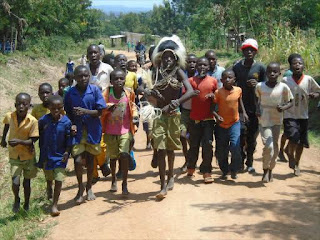ABANYALA BA KAKAMEGA: Words Related to Circumcision

Abanyala ba Kakamega practice circumcision of boys every even year during the months of August. Circumcision transformed boys into young men. A) Origin of circumcision Among Abanyala ba Kakamega Circumcision among the Abanyala is said to have been there from long time ago but suspended due to many natural calamities and wars during migration. It was RE-started off in 1710 under the leadership of Mukhamba Mukhekhe of Abayemba (Abasaya). Abayemba were originally the royal clan of Abanyala. The first official age set of 1710 was named after the killer raiders called Abakolongolo who attacked their forefathers at Sirikwa leading to suspension of circumcision years. They attacked, killed and took everything then went. Due to a big comet (limuli) that passed theth sky, the first age set (that closed abakolongolo of Sirikwa) was called Abakolongolo lumuli. The Abakolongololo age set also tied up with the Germans hence leading to the reference of Abakolongolo as Germans. The re-introdu


